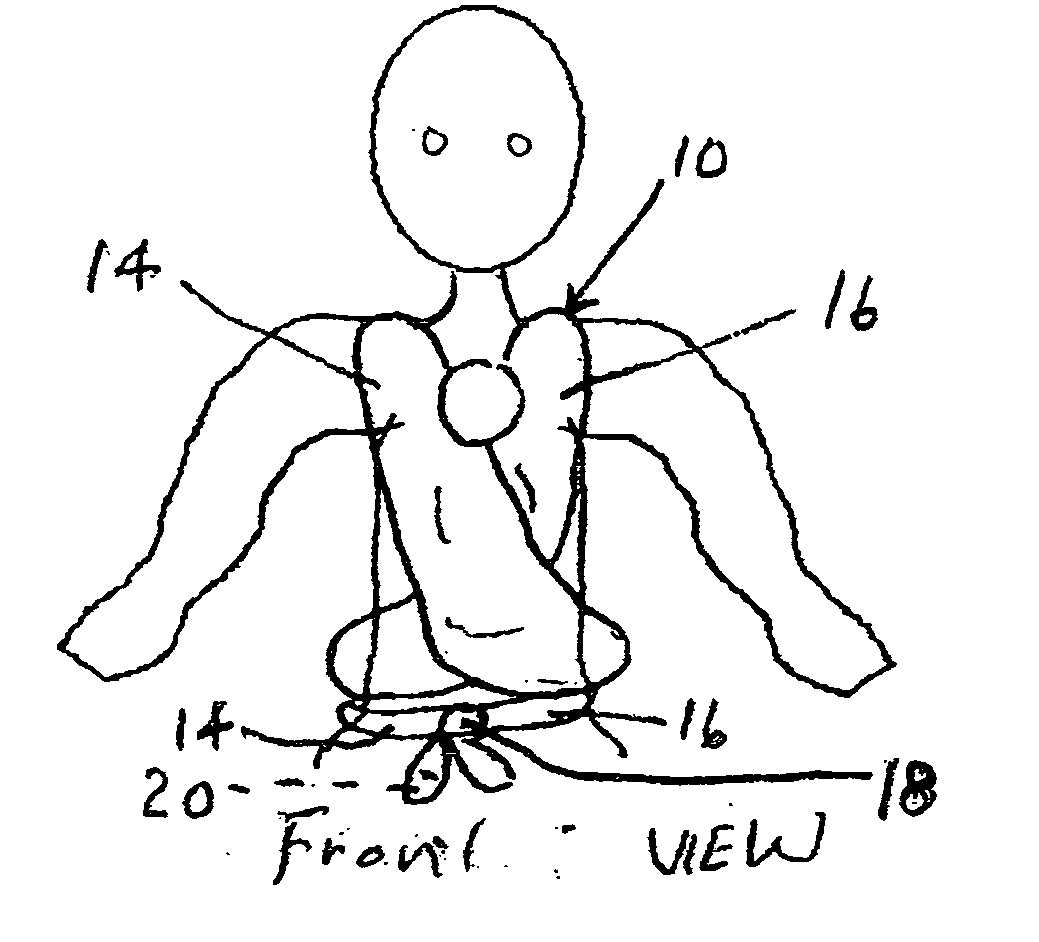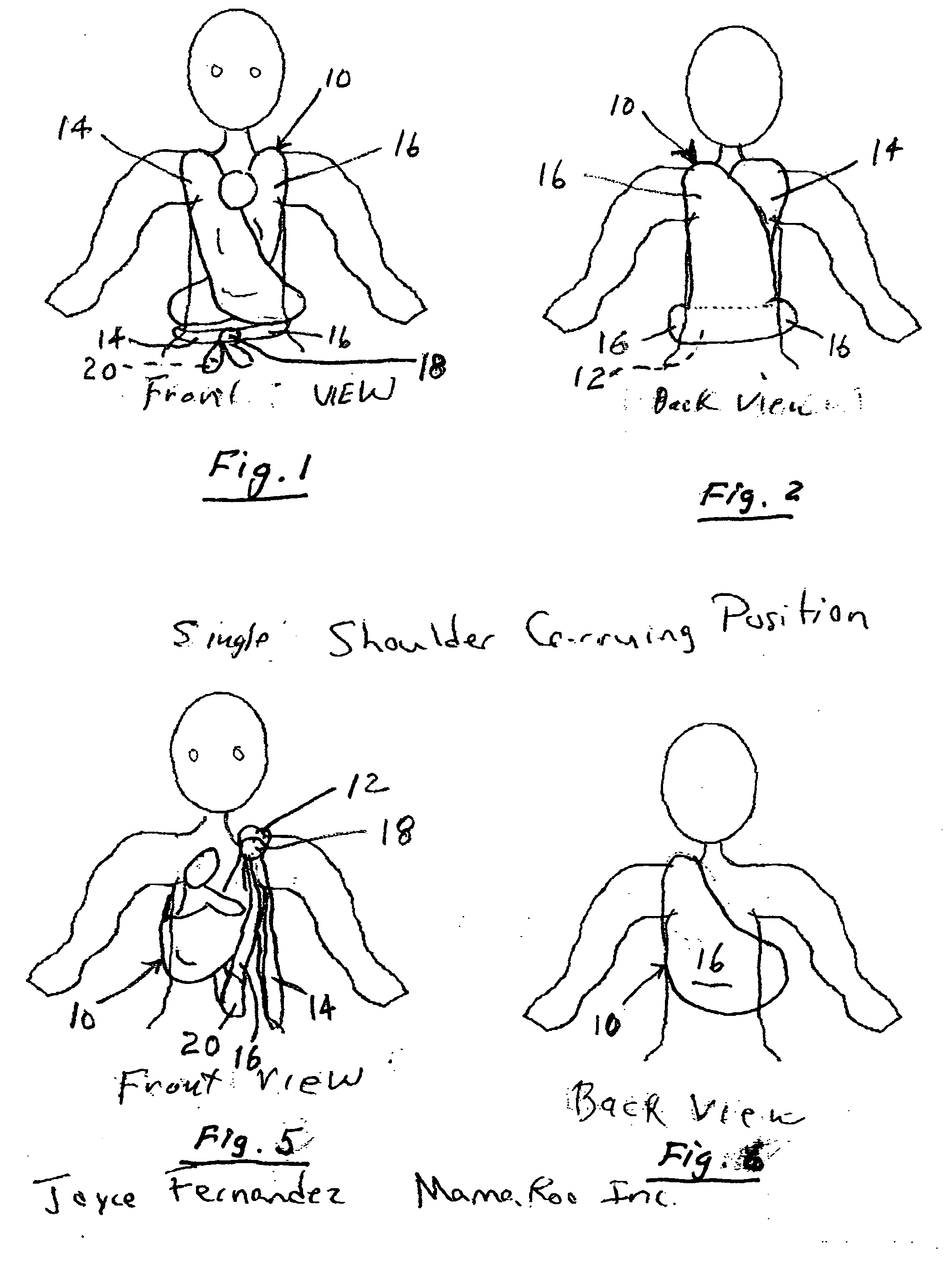Child sling
a child and sling technology, applied in the field of child slings, can solve the problems of not saving you from increased back pain and unsuitable nursing, and achieve the effect of convenient use of child's slings in shawls and adaptability
- Summary
- Abstract
- Description
- Claims
- Application Information
AI Technical Summary
Benefits of technology
Problems solved by technology
Method used
Image
Examples
Embodiment Construction
[0027] Referring now to the drawings, the child's sling of the invention is shown in FIGS. 3 and 4. As noted earlier, the sling, generally indicated by the numeral 10, is normally a thin piece of elongated fabric which may be six or so yards long and two feet or so wide, and of sufficient tensile strength to support a child.
[0028] The sling 10, near its midpoint, mounts crosswise a channel 12 through which its upper and lower branches 14 and 16, respectively, may be passed when the sling is over the carrier's back. The channel 12 is formed by folding the length of the fabric so that one branch is about one (1) foot longer than the other, and then sewing a straight line 18 across the width of the fabric about seven (7) inches away from the centerfold. Thus you end up with a seven (7) inch piece of fabric sticking out near the middle of the length of the extended fabric, and constituting a channel through which the brances of the fabric may be passed.
[0029] The channel 12 may also b...
PUM
 Login to View More
Login to View More Abstract
Description
Claims
Application Information
 Login to View More
Login to View More - R&D
- Intellectual Property
- Life Sciences
- Materials
- Tech Scout
- Unparalleled Data Quality
- Higher Quality Content
- 60% Fewer Hallucinations
Browse by: Latest US Patents, China's latest patents, Technical Efficacy Thesaurus, Application Domain, Technology Topic, Popular Technical Reports.
© 2025 PatSnap. All rights reserved.Legal|Privacy policy|Modern Slavery Act Transparency Statement|Sitemap|About US| Contact US: help@patsnap.com



